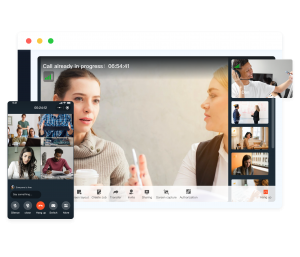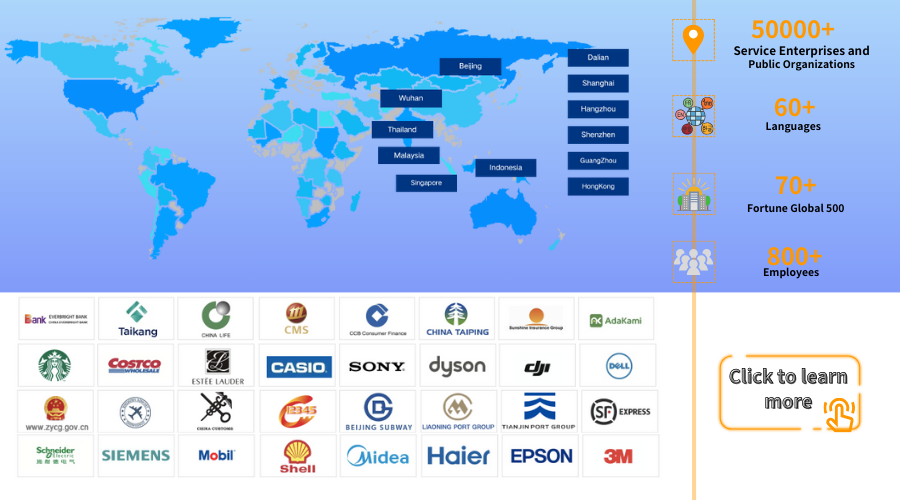How to Evaluate the Usability of Video Chat
Article Summary:With its intuitive and efficient nature, video customer service has quickly become a new bridge connecting businesses with consumers, garnering significant favor, especially among the elderly. This article will explore multiple aspects of how to evaluate the usability of video customer service and recommend a user-friendly video customer service tool – Udesk’s Video Chat.
Table of contents for this article
Your customers need more than just quick responses; they increasingly require diverse solutions, such as video assistance.
With its intuitive and efficient nature, video customer service has quickly become a new bridge connecting businesses with consumers, garnering significant favor, especially among the elderly. This article will explore multiple aspects of how to evaluate the usability of video customer service and recommend a user-friendly video customer service tool – Udesk’s Video Chat.

Technical Support and Real-Time Interaction
Video chat enables users to communicate directly face-to-face with support staff through real-time video calls. This intuitive communication method not only provides quicker and more accurate problem resolution but also enhances the realism and efficiency of the interaction. In traditional phone or text-based support, users may need to spend significant time explaining their issues, and support staff might have to ask multiple questions to gather complete information. In contrast, video chat can quickly identify and understand users' problems through visual information, reducing communication time and misunderstandings. Additionally, users can feel the attention and care from support staff during face-to-face interactions, increasing trust and satisfaction.
For instance, when resolving complex technical issues, video chat can help users understand solutions more intuitively through step-by-step demonstrations or real-time presentations. Users can see the specific operational processes via video, eliminating the need to rely on text descriptions or diagrams, thus significantly shortening the time required to learn and solve issues. Support staff can answer users' questions instantly during the video call and adjust demonstration steps to match the user's understanding and needs. This interaction not only improves the efficiency of problem-solving but also provides users with a more professional and considerate service experience.
Accessibility and Global Coverage
With the progression of globalization, video chat breaks through geographical and language barriers, allowing users worldwide to enjoy high-quality customer service experience. Traditional forms of customer service such as phone calls or emails are often hindered by time zone differences and language barriers. Video chat, however, overcomes these challenges through real-time interaction and multilingual support. For example, within multinational enterprises, video chat can support multilingual communication. With real-time translation and localized customer service personnel, it helps users from different language backgrounds receive an equivalent level of service experience. This not only reduces misunderstandings and delays in communication but also makes users feel more valued and cared for.

Technical Support: Stable and Smooth Communication Quality
The experience of video chat largely depends on robust technical support, including stable video transmission, and clear audio and video quality. Technical failures or delays can directly result in communication issues, impacting user experience. To address this, leading companies employ cutting-edge audio-video encoding technologies and cloud computing services to ensure low-latency, high-definition video calling services globally.
User Acceptance and Market Trends
According to market trends, video chat is expected to become one of the mainstream forms of future customer service, especially in the fields of high-value product support and multinational enterprise services. High-value products often require higher levels of support and after-sales service, and video chat can provide face-to-face communication, making customers feel valued and cared for.
The elderly population holds a significant share in the consumer market for video chat, for the following reasons:
Preference for Face-to-Face Communication: Elderly individuals often prefer traditional interpersonal communication methods. The face-to-face communication experience provided by videochat meets their need for direct and warm interaction, reducing the sense of distance caused by technological barriers.
Lack of Knowledge Reserves: When encountering product issues, elderly individuals often struggle due to insufficient knowledge or difficulty keeping pace with technological advancements. Video chat avoids the complexities of following text-based solutions, aligning with the characteristics of elderly users.
The development of video customer service addresses convenience, emotional needs, and demonstrates the digital age's pursuit of age-friendly services.
Udesk's Video chat
Udesk's Video chat is a popular tool that has already partnered with numerous businesses thanks to its powerful features. For companies, it offers a new type of interaction that leaves a lasting impression on customers and helps promote the brand.
For customers, Udesk's Video chat boasts robust mobile integration capabilities. This means you can use video customer service anytime, anywhere, on your iOS or Android devices, enhancing the overall user experience.
》》Click to start your free trial of Video Chat, and experience the advantages firsthand.
The article is original by Udesk, and when reprinted, the source must be indicated:https://www.udeskglobal.com/blog/how-to-evaluate-the-usability-of-video-chat.html
Usability of Video ChatVideo ChatVideo Chat Tool

 Customer Service& Support Blog
Customer Service& Support Blog



